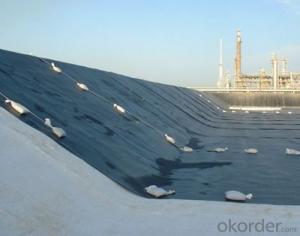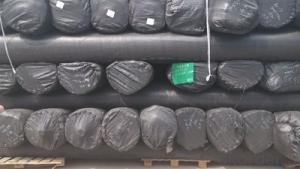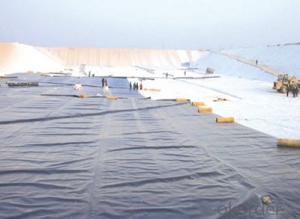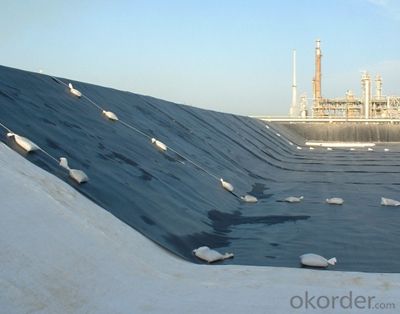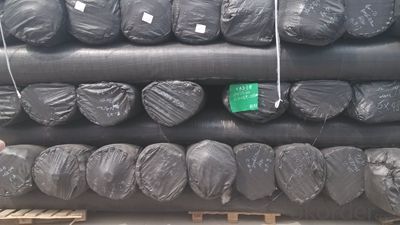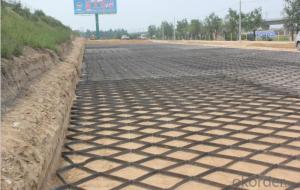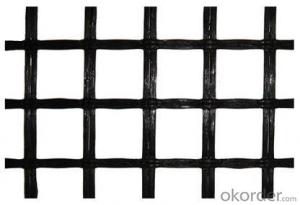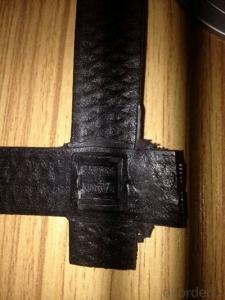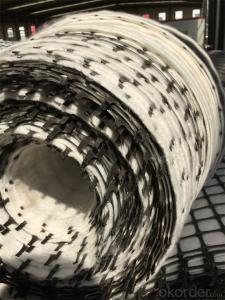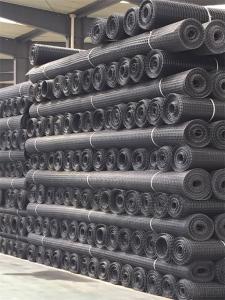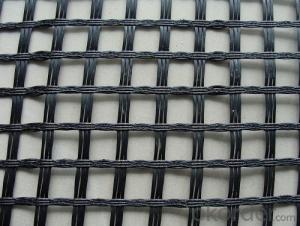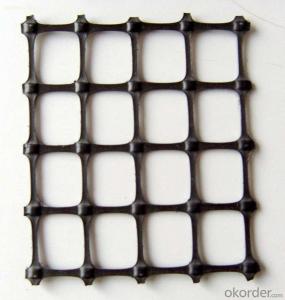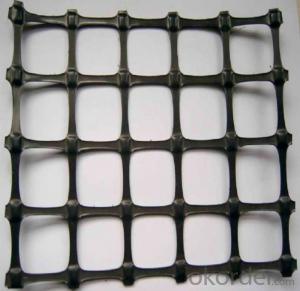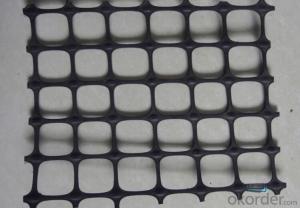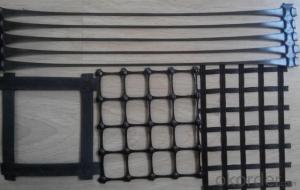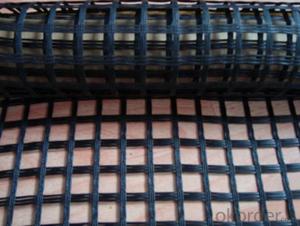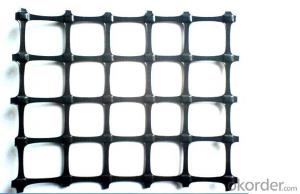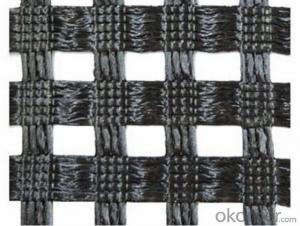Egrid Biaxial PP Geogrids Reinforced Normal HDPE Geomembrane for Environmental and Water Conservancy Projects
- Loading Port:
- Tianjin
- Payment Terms:
- TT OR LC
- Min Order Qty:
- 88 m²
- Supply Capability:
- 1800000 m²/month
OKorder Service Pledge
OKorder Financial Service
You Might Also Like
Normal HDPE Geomembrane for river pool highway project
Made from MDPE and HDPE resin by blow film process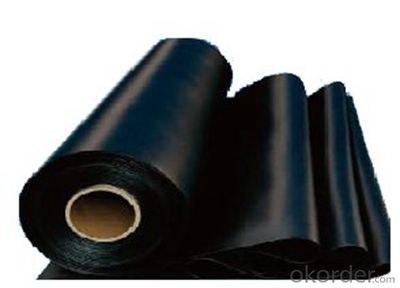 Specification of Normal HDPE Geomembrane for river pool highway project:
Specification of Normal HDPE Geomembrane for river pool highway project:
1. Thickness: 0.3mm-3. Omm
2.4m-9m in roll width, the length as client ' s request
Property of Normal HDPE Geomembrane for river pool highway project:
I. Excellent environmental stress cracking resistance property
2. Low temperature resistance, corrosion resistance, aging resistance
3. For service temperature range: -600C-+600C
4. Service valid term: 60 years at least
Application of Normal HDPE Geomembrane for river pool highway project:
L. Municipal environmental projects, water conservancy projects
2. Anti-seepage p rojects for transportation infrastructu re
3. AG ricultu ral water conserva ncy proj ects
4. Water proof engineering for aquaculture, Irrigation ditch, ponds and reservoir
5. Anti-seepage projects for tunnel, chemical pool, buildings
Production standard of Normal HDPE Geomembrane for river pool highway project:
1. GB/T17643-2011
2JT/T 518-2004
Area |
|
Hydraulic | Lagooning and Water Treatment, Ornamental Ponds, Golf Courses Aquaculture and Desalination Water LagoonsTanks, Reservoirs, Liquid WasteFloating Cover SolutionsDrainage and FiltrationShading Cover Solutions |
Environment | Tailing ponds, Leach mining,Landfills,Landfill Capping,Protection against corrosion,Vertical Barriers |
Civil Works | Erosion Control, Secondary Containment, Tunnels,Linear and Surface Works,Consolidation of Margins,Soil Reinforcement,Soil Separation. |
Building | Parkings,Roofing,Soundproofing building |
Introduction of CNBM
China National Building Materials (Group) Corporation (CNBM) is a state-owned enterprise in charge of administrative affairs in China building materials industry. Established in 1984, CNBM is a large group corporation of building materials with total assets of RMB 25 billion and a total staff of 30,000. Now CNBM owns more than 200 subsidiaries in and abroad the country, including wholly-owned corporations and joint ventures.
FAQ of geosynthetics :
What is geosynthetics ?
Geosynthetics form a perfect erosion control fabric used extremely widely in civil engineering to stabilize and reinforce slopes and soil under or next to roads, railways, dams, water reservoirs etc.. They can be easily applied which minimizes the time of construction, as well as they limit the resources and materials necessary.
What kinds of geosynthetics we have ?
Non-woven geotextile, geogrids, geocells, GCL, Geomembranes, Geonets, Geocomposites etc .
What is the geosynthetics used for ?
Hydraulic
Lagooning and Water Treatment, Ornamental Ponds, Golf Courses
Aquaculture and Desalination,Water Lagoons,Tanks, Reservoirs, Liquid Waste,Floating Cover Solutions, Drainage and Filtration
Environment
Tailing ponds, Leach mining,Landfills,Landfill Capping,Protection against corrosion,Vertical Barriers
Civil Works
Erosion Control,Secondary Containment,Tunnels,Linear and Surface Works,Consolidation of Margins,Soil Reinforcement,Soil Separation.
Building - Parkings,Roofing,Soundproofing
- Q: How do geogrids improve the performance of unpaved trails?
- Geogrids improve the performance of unpaved trails by providing reinforcement and stabilization to the soil, preventing erosion and rutting. They distribute the load more evenly, reducing the potential for sinking or shifting. Additionally, geogrids increase the tensile strength of the trail, allowing it to withstand heavy traffic and weather conditions, thus extending its lifespan and reducing maintenance needs.
- Q: Can geogrids be used in slope stabilization?
- Yes, geogrids can be used in slope stabilization. Geogrids are often employed to reinforce and stabilize slopes by providing additional strength and resistance to soil erosion. They are effective in preventing slope failures and can be used in various applications such as retaining walls, embankments, and slopes where erosion control is required.
- Q: Can geogrids be used in reinforcement of stormwater management systems?
- Yes, geogrids can be used in the reinforcement of stormwater management systems. Geogrids are commonly used to reinforce retaining walls, slopes, and soil structures, and they can also provide reinforcement and stability to stormwater management systems such as detention ponds, infiltration basins, and bio-retention cells. By installing geogrids, the system can better withstand the forces exerted by stormwater runoff, preventing soil erosion and maintaining the overall integrity of the structure.
- Q: Can geogrids be used in reinforcement of mechanically stabilized slopes?
- Yes, geogrids can be used in the reinforcement of mechanically stabilized slopes. Geogrids are commonly used in such applications to enhance the stability and strength of slopes by providing additional tensile strength and confinement to the soil. This helps to resist lateral forces and prevent slope failures, making geogrids an effective solution for reinforcing mechanically stabilized slopes.
- Q: Product features: high strength, small deformation; creep; corrosion resistance, long service life: steel plastic geogrid with plastic material as a protective layer, which is supplemented with a variety of additives in aging resistance, oxidation resistance, corrosion resistance to acid and alkali, salt and other harsh environment
- What dialect! Is Chinese
- Q: How do geogrids enhance the stability of railway track embankments?
- Geogrids enhance the stability of railway track embankments by providing reinforcement and preventing soil erosion. They are placed within the embankment layers, creating a strong and stable foundation. The geogrids distribute the load from the trains more evenly, reducing settlement and the risk of track deformation. Additionally, they improve drainage and prevent water accumulation, which can weaken the embankment structure. Overall, geogrids increase the longevity and performance of railway track embankments by enhancing their stability and reducing maintenance needs.
- Q: Can geogrids be used in ground improvement for industrial facilities?
- Yes, geogrids can be used in ground improvement for industrial facilities. Geogrids are often employed in various geotechnical applications, including stabilizing and reinforcing soil in areas with weak or unstable ground conditions. In the context of industrial facilities, geogrids can be used to enhance the load-bearing capacity of the ground, prevent soil erosion, and provide additional stability to the foundation. By installing geogrids, the overall performance and durability of the ground can be improved, making them a suitable solution for ground improvement in industrial settings.
- Q: How do geogrids help in slope stabilization?
- Geogrids help in slope stabilization by providing reinforcement to the soil, increasing its strength and stability. These grid-like structures are placed within the soil, creating a strong interlocking network that distributes and absorbs the forces acting on the slope. This helps to prevent soil erosion, sliding, and collapse, ultimately ensuring the stability and safety of the slope.
- Q: How do geogrids improve the performance of geotextile-reinforced slopes?
- Geogrids improve the performance of geotextile-reinforced slopes by providing additional tensile strength and stability to the soil. They act as a reinforcement layer, distributing loads more evenly and preventing excessive soil movement or erosion. This helps to increase the overall strength and integrity of the slope, reducing the risk of failure or collapse.
- Q: How do geogrids improve the performance of geotextile tubes?
- Geogrids improve the performance of geotextile tubes by providing additional structural support, enhancing stability, and increasing tensile strength. They help to prevent stretching and deformation of the geotextile material, thereby maintaining the shape and integrity of the tubes. This reinforcement helps to withstand the forces exerted by water, soil, and other external factors, making geotextile tubes more durable and effective in applications such as erosion control, shoreline protection, and environmental containment.
Send your message to us
Egrid Biaxial PP Geogrids Reinforced Normal HDPE Geomembrane for Environmental and Water Conservancy Projects
- Loading Port:
- Tianjin
- Payment Terms:
- TT OR LC
- Min Order Qty:
- 88 m²
- Supply Capability:
- 1800000 m²/month
OKorder Service Pledge
OKorder Financial Service
Similar products
Hot products
Hot Searches
Related keywords
